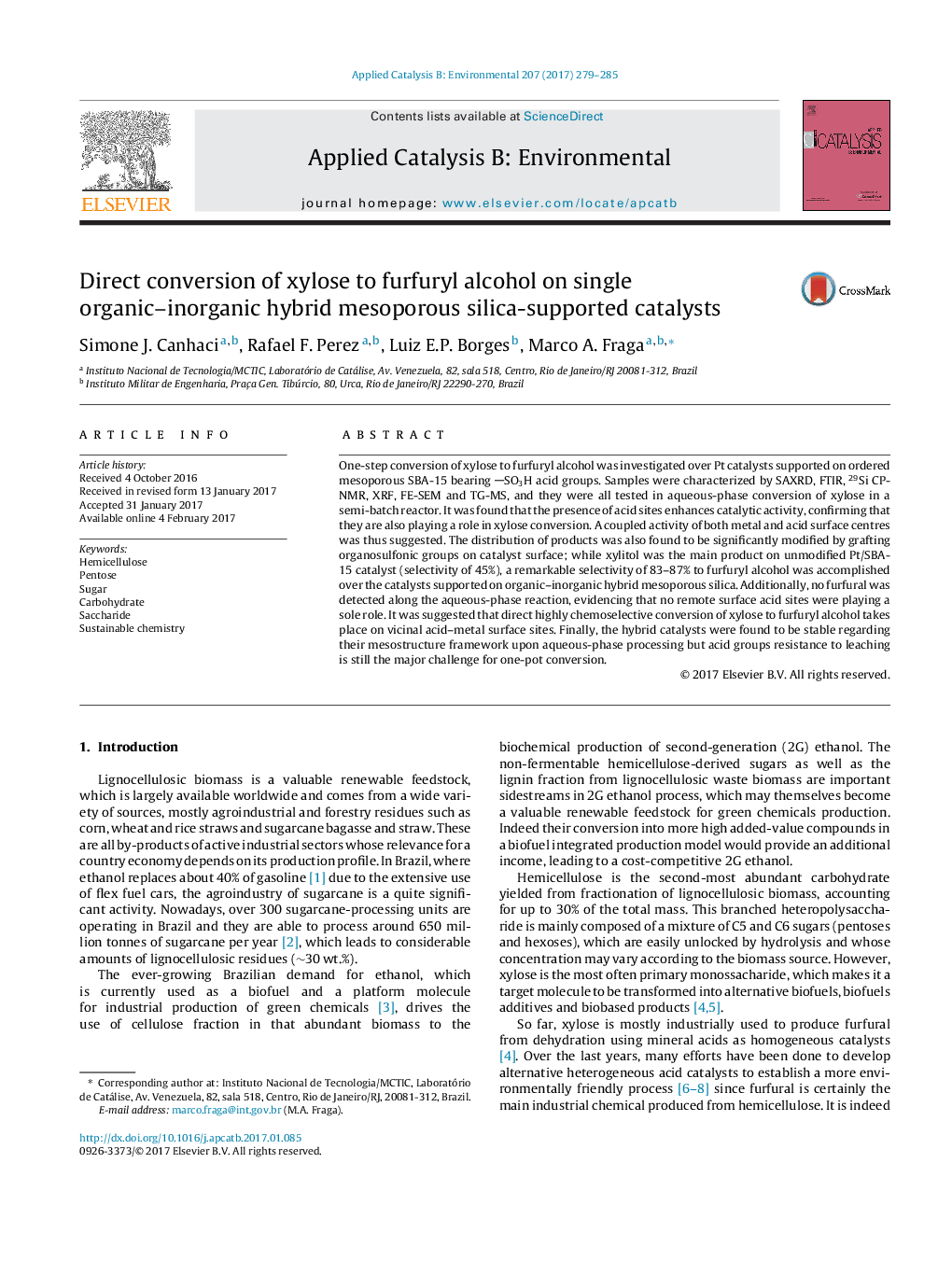| Article ID | Journal | Published Year | Pages | File Type |
|---|---|---|---|---|
| 6454079 | Applied Catalysis B: Environmental | 2017 | 7 Pages |
â¢Furfuryl alcohol can be produced directly from xylose in a single step process.â¢Presence of acid groups suppresses hydrogenation of xylose to its sugar alcohol.â¢Remarkable selectivities within 83-87% were reached in sugar direct conversion.â¢Hybrid catalysts were stable regarding mesostructure but acid groups leaching is still a challenge.
One-step conversion of xylose to furfuryl alcohol was investigated over Pt catalysts supported on ordered mesoporous SBA-15 bearing SO3H acid groups. Samples were characterized by SAXRD, FTIR, 29Si CP-NMR, XRF, FE-SEM and TG-MS, and they were all tested in aqueous-phase conversion of xylose in a semi-batch reactor. It was found that the presence of acid sites enhances catalytic activity, confirming that they are also playing a role in xylose conversion. A coupled activity of both metal and acid surface centres was thus suggested. The distribution of products was also found to be significantly modified by grafting organosulfonic groups on catalyst surface; while xylitol was the main product on unmodified Pt/SBA-15 catalyst (selectivity of 45%), a remarkable selectivity of 83-87% to furfuryl alcohol was accomplished over the catalysts supported on organic-inorganic hybrid mesoporous silica. Additionally, no furfural was detected along the aqueous-phase reaction, evidencing that no remote surface acid sites were playing a sole role. It was suggested that direct highly chemoselective conversion of xylose to furfuryl alcohol takes place on vicinal acid-metal surface sites. Finally, the hybrid catalysts were found to be stable regarding their mesostructure framework upon aqueous-phase processing but acid groups resistance to leaching is still the major challenge for one-pot conversion.
Graphical abstractDownload high-res image (89KB)Download full-size image
